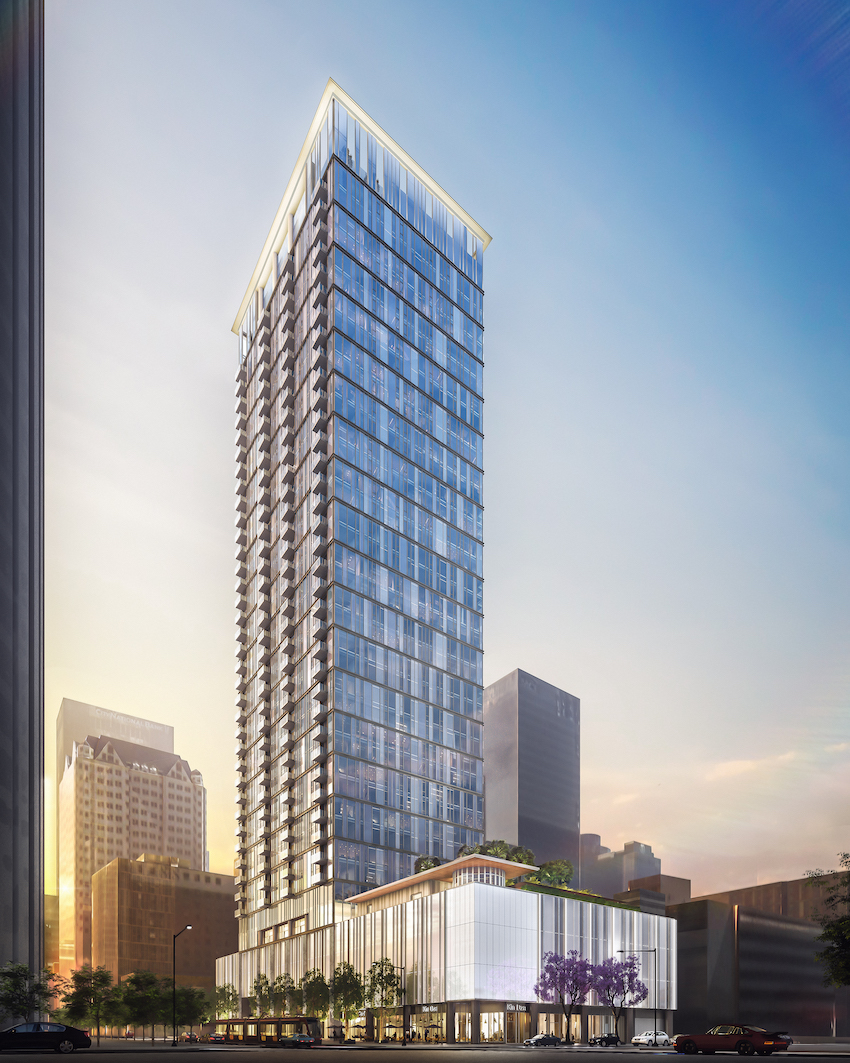Achieving Sustainable Goals with Extruded Aluminum Trim
Specifying materials that provide flexible design and environmental benefits
Sponsored by TAMLYN | Presented by James (JED) Donaldson, AIA and Milton Lozano
Webinar On-Demand
Aluminum, as a metal, can play a significant role in reducing GHG emissions in the construction industry. This is especially true when specifying extruded aluminum trim, which can offer a wealth of benefits while helping support sustainability goals. From the lightweight nature of aluminum, which reduces energy use during transportation, to its durability and corrosion resistance, aluminum addresses both the embodied and occupied carbon footprint of a project. In addition, extruded aluminum trim provides flexibility in design, allowing for customization to support aesthetic goals, while also employing modern thermal bridging technology.
Johnson Fain partner James (JED) Donaldson will present the firm’s sustainability-intensive design of Figueroa Eight, a new high-rise in downtown Los Angeles. Using advanced computer modeling, JED and his team created a 41-story mixed-use building that complies with strict California Title 24 energy requirements and restrictive Los Angeles building codes.
He will address how the building’s unitized window-wall system with custom aluminum extrusions offer residents of its apartment units full-height glazing to maximize daylight and expand views while also meeting California Green Building Code requirements. Specifics will include façade-design attention to patterning, glazing, and selecting high-performance materials for sustainability goals and carbon reduction. The 501-foot-tall Figueroa Eight residential tower replaced a surface parking lot located on the Figueroa corridor.
Milton Lozano will discuss and look at specifically how extruded aluminum trim can be a valuable tool in the architect’s design kit when trying to reduce a project's carbon footprint while also achieving aesthetic and performance goals.
At the end of these dynamic presentations, there will be a brief Q&A session to discuss key points from the webinar.

Photo courtesy of Johnson Fain
Figueroa Eight, a new high-rise in downtown Los Angeles
 |
James (JED) Donaldson AIA, has more than two decades of professional experience in designing diverse building typologies internationally. JED’s experience covers multifamily residential, office, education, biotech, civic, cultural, and mixed-use developments. He is a partner at Johnson Fain. Headquartered in Los Angeles for more than 35 years, Johnson Fain is an award-winning international architecture, urban design + planning, and interior design studio known for its creative approach to the built environment. Founding partners Scott Johnson, FAIA, and William Fain, FAIA, lead a diversified office of 50 professionals with partners Juan Begazo, Amber Langlois, Suma Spina, Steve Chung, and James (JED) Donaldson. JED is a board member of AIA’s Los Angeles Chapter and board president of Passive House California (PHCA); he is active in Urban Land Institute (ULI) and Council on Tall Buildings and Urban Habitat (CTBUH). JED has taught and lectured at University of California, Berkeley, USC, UCLA, University of Puerto Rico, and Art Center College of Design. He holds a Master of Architecture from Virginia Tech. |
 |
Milton Lozano is part of the Specifications Team at Tamlyn based out of Houston, TX, with an emphasis on Moisture Management and Building Envelope. He holds a B.S. in Mathematics from the University of Houston and brings 13 years of experience in Education. During his many roles he has acquired skills in leadership, planning, teaching, active problem solving, presentation, team management, business development, and many more that translate into his current role. Milton’s job emphasizes architect/builder presentations, job site walkthroughs, interactive mock installs, and product solutions. |
TAMLYN is a family-owned company with 50 years in the building products industry and has placed a great deal of recent focus on building science, especially moisture management. This direction led to the development of their TamlynWrap® line, Drainable with its 1.5mm bonded filament creating an enhanced WRB, and RainScreen 6.3 (1/4”) and 10.1 (3/8”). TamlynWrap® RainScreen is a multi-layer water management system, intended for use over existing WRB or coated sheathing, of cavity spaces that are non-compressible and act as a furring matrix to promote enhanced drainage and drying, paired with improved installation efficiency.
Originally published in Architectural Record
Originally published in January 2024
LEARNING OBJECTIVES
- Identify the natural benefits of aluminum that help support environmental and sustainable goals for a building project.
- List the attributes of extruded aluminum trim that can help reduce both the embodied and occupied carbon footprint of a building.
- Recognize the design benefits of specifying extruded aluminum trim to achieve both high-performance exteriors and aesthetic goals.
- Discuss how aluminum can be an ideal choice for large projects where attention to detail is critical to satisfy environmental goals.











